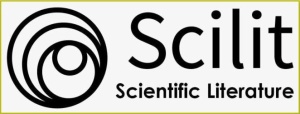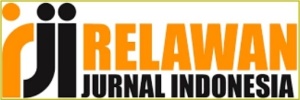Pengaruh Pemberian Berbagai Konsentrasi Timbal (Pb) terhadap Pertumbuhan Bibit Mangrove Rhizophora stylosa
DOI:
https://doi.org/10.36312/panthera.v4i3.300Keywords:
Mangrove Seedlings, Lead Concentration (Pb), Growth, Rhizophora stylosa.Abstract
Mangroves are a type of higher plant found in coastal areas that play many roles, one of which is as a bioaccumulator of harmful pollutants. One such harmful pollutant is the heavy metal Lead (Pb). This study aims to determine the effect of various concentrations of lead on the growth of mangrove seedlings, specifically Rhizophora stylosa. This research is an experimental study using a Completely Randomized Design (CRD). There were four lead concentration treatments: K0 = 0 ppm (control); K1 = 0.1 ppm; K2 = 1 ppm; K3 = 10 ppm; and K4 = 100 ppm. Each treatment was repeated five times, resulting in 25 experimental units. The seedlings used were Rhizophora stylosa, approximately 8 months old, with an average height of 70 cm and an average of 8 leaves. The growing medium used was homogenized mud soil. Before the experiment, the plants were acclimatized for 1 week. The treatment involved a solution of Pb acetate administered every day for 6 weeks. The parameters measured included plant height increase (cm), leaf area (cm²), increase in the number of leaves, increase in the number of shoots, and increase in stem diameter (cm). Based on observations over the 6-week treatment period, the average stem growth was between 0.12-0.28 cm, with no increase in stem diameter, an average leaf area increase of 0.14-0.38 cm², an increase in shoots by 1-3, and an increase in the number of leaves by 2-6. The ANOVA results at a significance level of 5% indicated that lead concentrations of 0-100 ppm did not significantly affect the growth of Rhizophora stylosa seedlings.
Downloads
References
Aini, A., Hastuti, R. B., & Hastuti, E. D. (2016). Pertumbuhan Semai Rhizophora mucronata pada Saluran Tambak Wanamina dengan Lebar yang Berbeda. Jurnal Akademika Biologi, 5(1), 48-59.
Darwati, H., Nurkalida, N., & Astiani, D. (2021). Pertumbuhan Tanaman Bakau (Rhizophora spp.) di Kawasan Mangrove Kelurahan Setapuk Besar Kota Singkawang. Jurnal Hutan Lestari, 9(4), 686-694. https://dx.doi.org/10.26418/jhl.v9i4.53029
Hao, Y., Wu, H., Liu, Y., & Hu, Q. (2015). Mitigative Effect of Bacillus subtilis QM3 on Root Morphology and Resistance Enzyme Activity of Wheat Root under Lead Stress. Advances in Microbiology, 5, 469-478. https://doi.org/10.4236/aim.2015.56048
Haryadi, H. (2013). Pengukuran Luas Daun dengan Metode Simpson. Anterior Jurnal, 12(2), 1-5. https://doi.org/10.33084/anterior.v12i2.299
Jha, P. C., Samal, A. C., Santra, S., & Dewanji, A. (2016). Heavy Metal Accumulation Potential of Some Wetland Plants Growing Naturally in the City of Kolkata, India. American Journal of Plant Sciences, 7(15), 2112-2137. https://doi.org/10.4236/ajps.2016.715189
Kesuma, R. A., Kustanti, A., & Hilmanto, R. (2016). Pertumbuhan Riap Diameter Pohon Bakau Kurap (Rhizophora mucronata) di Lampung Mangrove Center. Jurnal Sylva Lestari, 4(3), 97-106. http://dx.doi.org/10.23960/jsl3497-106
Laily, N. N. (2019). Fitoremediasi Tanaman Mangrove Jenis Rhizophora apiculata terhadap Konsentrasi Timbal (Pb) pada Tanah. Skripsi. Universitas Jember.
Nas, F. S., & Ali, M. (2018). The Effect of Lead on Plants in Terms of Growing and Biochemical Parameters: A Review. MOJ Eco Environ Sci, 3(4), 265-268. https://doi.org/10.15406/mojes.2018.03.00098
Nugraha, R. R., Sunaryo, S., Redjeki, S. (2023). Struktur Komunitas Mangrove di Ekosistem Hutan Mangrove Kecamatan Tayu, Kabupaten Pati. Journal of Marine Research, 12(3), 547-554. https://doi.org/10.14710/jmr.v12i3.36227
Nurhidayati, N. (2020). Identifikasi Pencemaran Logam Berat di Sekitar Pelabuhan Lembar Menggunakan Analisa Parameter Fisika dan Kimia. Skripsi. Universitas Islam Negeri Mataram.
Radja, C. H., Toruan, L. N. L., & Kangkan, A. L. (2023). Variabel Kondisi Lingkungan pada Ekosistem Mangrove di Kota Kupang. Jurnal Vokasi Ilmu-ilmu Perikanan (JVIP), 4(1), 19-28. http://dx.doi.org/10.35726/jvip.v4i1.1740
Rahman, F. A. (2022). Ekologi Mangrove Pulau Lombok. Mataram: Universitas Islam Negeri Mataram Press.
Raj, K., & Das, A. P. (2023). Lead Pollution: Impact on Environment and Human Health and Approach for a Sustainable Solution. Environmental Chemistry and Ecotoxicology: KeAi Journal, 5(1), 79-85. https://doi.org/10.1016/j.enceco.2023.02.001
Sabreena, S., Hassan, S., Bhat, S. A., Kumar, V., Ganai, B. A., & Ameen, F. (2022). Phytoremediation of Heavy Metals: An Indispensable Contrivance in Green Remediation Technology. Plants, 11(9), 1-28. https://doi.org/10.3390/plants11091255
Safnowandi, S. (2021). Struktur Komunitas Mangrove di Teluk Poton Bako sebagai Buku Panduan untuk Pemantapan Konsep Ekosistem pada Guru Biologi SMA di Kabupaten Lombok Timur. Jurnal Ilmiah IKIP Mataram, 2(1), 365-379.
Utami, R., Rismawati, W., & Sapanli, K. (2018). Pemanfaatan Mangrove untuk Mengurangi Logam Berat Perairan. In Prosiding Seminar Nasional Hari Air Dunia (pp. 141-153). Palembang, Indonesia: Universitas Sriwijaya.
Winata, B., Wasis, B., & Setiadi, Y. (2016). Studi Adaptasi Samama (Anthocephalus macrophyllus) pada Berbagai Konsentrasi Timbal (Pb). Jurnal Pengelolaan Sumber Daya Alam dan Lingkungan, 6(2), 211-216. https://doi.org/10.29244/jpsl.6.2.211
Wulandari, T., Budihastuti, R., & Hastuti, E. D. (2018). Kemampuan Akumulasi Timbal (Pb) pada Akar Mangrove Jenis Avicennia marina (Forsk.) dan Rhizophora mucronata (Lamk.) di Lahan Tambak Mangunharjo Semarang. Jurnal Biologi, 7(1), 89-96.

Downloads
Published
How to Cite
Issue
Section
License
Copyright (c) 2024 Sucika Armiani

This work is licensed under a Creative Commons Attribution-ShareAlike 4.0 International License.
-
Attribution — You must give appropriate credit, provide a link to the license, and indicate if changes were made. You may do so in any reasonable manner, but not in any way that suggests the licensor endorses you or your use.
-
ShareAlike — If you remix, transform, or build upon the material, you must distribute your contributions under the same license as the original.












































